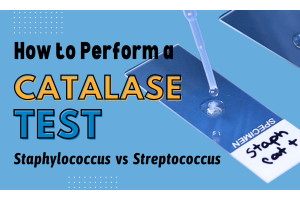The Difficulties of C. difficile
With Clostridium difficile infections (CDI) on the rise among hospital acquired infections across America in hospitals and care facilities, infection control specialists have been scrambling to prevent the acceleration of this toxic and destructive bacterium. Where does CDI come from? Where is it going? How can we avoid it? With nearly half a million impacted yearly from this infection, these are the current concerns that are starting to rise to the top within the patient-care industry.
CDI can be found most often around hospitals and clinics, especially among patients who have previously been given antibiotics. Once prescribed and implemented, antibiotics can affect the gut flora by dismantling microbial cell walls. This is effective against most bacteria; C. diff, however, is an exception. Because it is resistant to some antibiotics, C. diff remains undisturbed during the patient’s treatment. Because C. diff is no longer subdued by normal gut flora, it wastes no opportunity to multiply and flourish in this particularly favorable environment. At this point, C. diff often takes hold and causes extreme discomfort with multiple symptoms including diarrhea, severe cramps, irritable bowel syndrome, and colitis. Some patients even perish from this tragic illness.
All around the nation, scientists are focusing their efforts in reducing the impact of this potentially deadly infection. After the first set of antibiotics has indirectly caused the infection, some researchers suggest the key to specifically target and subdue C. diff is more antibiotics. Although this method can be effective, up to 20% of patients experience a recurrence of this persistent ailment. Others are currently focusing their treatment efforts on studies that could utilize vaccinations for the two target toxins brought on by C. diff. Yet another advancement in treatment methods shows compelling evidence that could change how we treat CDI today: Fecal microbiota transplants. FMT restores the balance of probiotics in the gut flora which helps fight off the pathogenic organisms. This method has not yet been approved by the FDA, although early study results have been promising.
While the exact number of affected individuals is unknown, C. diff is found in many healthy individuals. This does not mean these individuals suffer from the infection, merely that the bacteria are present in their gut flora. Normally, other bacteria present in a healthy patient would subdue C diff. However, when a patient’s gut flora is compromised by antibiotics during a hospital stay, they are at a higher risk for acquiring a CDI due to the vast numbers of C. diff. Consequently, there is an increased need for strict sanitation procedures to reduce the possibility of patient cross-contamination through contact with feces. If a hospital cleaning crew does not adhere to proper cleaning protocols, this infection can spiral out of control and may result in many thousands of dollars in health care expenses and even patient death. C. diff kills nearly 30,000 people yearly and is especially threatening for the elderly and those with compromised immune systems. Of those 30,000 killed, around 90% were age 65 or older.
So, what can healthcare facilities do in the meantime? Testing and verifying the consistency and efficacy of their cleaning protocols will protect their patients’ well-being. Many hospitals and clinics have rigorous cleaning protocols, but often experience a lack of strict adherence. To make matters worse, there are very few products on the market that are able to quickly and accurately detect the presence of C. diff. Fortunately, an effective new product has been developed by Hardy Diagnostics: C. diff Banana Broth. Banana Broth is a selective and differential medium for environmental monitoring for C. diff. C Diff Banana Broth can positively verify the presence of C. diff in as little as 24 hours, making it highly cost-effective and efficient. This new product requires no anaerobic gas generators or expensive equipment beyond a simple incubator. C. diff Banana Broth allows infection control teams to ensure the efficacy of their cleaning protocols. The three-step process (swab, snap, incubate) used with Banana Broth is one of the only cost-effective methods available that could prevent an expensive and uncomfortable episode.
See C. diff Banana Broth in action at http://hardydiagnostics.com/cdiff/
References:
- Bien, Justyna, Vindhya Palagani, and Przemyslaw Bozko. "The intestinal microbiota dysbiosis and Clostridium difficile infection: is there a relationship with inflammatory bowel disease?" Therapeutic Advances in Gastroenterology. January 2013. Accessed February 02, 2017. https://www.ncbi.nlm.nih.gov/pmc/articles/PMC3539291/.
- "About C. difficile." OpenBiome. Accessed February 02, 2017. http://www.openbiome.org/about-cdiff/.
- "CDC: 1 in 3 antibiotic prescriptions unnecessary." Centers for Disease Control and Prevention. January 01, 2016. Accessed February 02, 2017. https://www.cdc.gov/media/releases/2016/p0503-unnecessary-prescriptions.html.
- "Medscape Log In." Medscape Log In. Accessed February 02, 2017. http://www.medscape.com/viewarticle/845534.
- Mayo Clinic Staff Print. "C. difficile infection." Treatment - C. difficile infection - Mayo Clinic. June 18, 2016. Accessed February 02, 2017. http://www.mayoclinic.org/diseases-conditions/c-difficile/diagnosis-treatment/treatment/txc-20202426.
- "Special Concerns for Seniors." Index of /. Accessed February 02, 2017. http://emerald.tufts.edu/med/apua/consumers/consumers---special-concerns-for-seniors.shtml.
- Mayo Clinic Staff Print. "C. difficile infection." Overview - C. difficile infection - Mayo Clinic. June 18, 2016. Accessed February 06, 2017. http://www.mayoclinic.org/diseases-conditions/c-difficile/home/ovc-20202264.
- "Economic healthcare costs of Clostridium difficile infection: a systematic review." The Journal of hospital infection. Accessed February 06, 2017. https://www.ncbi.nlm.nih.gov/pubmed/20153547.
- Review, Kathi NaillingAthens. "Athens girl undergoes a life-saving medical procedure." Athens Daily Review. January 27, 2017. Accessed February 06, 2017. http://www.athensreview.com/news/local_news/athens-girl-undergoes-lifesaving-medical-procedure/article_d952091a-e4de-11e6-838c-8fae9364d9d2.html.
- Chris Dall | News Reporter | CIDRAP News | Jan 26, 2017. "New treatment for recurrent C diff shows promise." CIDRAP. Accessed February 06, 2017. http://www.cidrap.umn.edu/news-perspective/2017/01/new-treatment-recurrent-c-diff-shows-promise.







